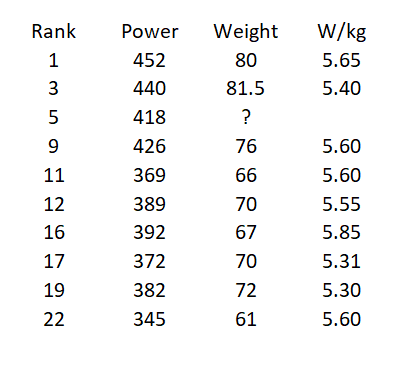UCI World Cycling championships are on at the moment. Overnight Australian time it was the ITT for women and U23 men. Not so many of the women share their power data, so this post focuses on the U23 men. Big congrats to Luke Plapp for sitting in that hot seat for a very long time only to be pipped at the post.
OK, to the data. The course has been described as very flat when compared to that used for the Olympics. The ‘climbing time triallists’ were talking down their chances ahead of the race. The suggestion being that it was more a ‘pure power’ time trial course.
And was it? Absolutely!
This number crunching is courtesy of the U23 male riders who kindly have uploaded their rides to Strava with power data. This includes the winner, and 10 of the first 22 riders (there were 66 in total). So essentially we have data for around half of the field that finished in the top 20.
Qualifiers:
– the power is for the Strava segment of the course and assumes of course that the power meter was calibrated accurately
– the weight is the declared weight in Strava, and you can see this is missing for one rider
The table shows: rank in the race, then power, then weight, then W/kg.
Simple correlation of absolute power with time to finish gives a correlation of 0.86. This means that 74% of the variance in performance was accounted for by raw power. The rest – well that’s made up a number of things, mostly aero gains.
If we correlate relative power (W/kg) with time to finish, there is absolutely no relationship whatsover. Zilch, zip, nada, nothing.
So spare a thought for the rider that finished in 22nd position. He put out exactly the same W/kg as the winner. But on a body weight of 61kg compared to the winner’s 80kg, that was never going to be competitive on a flat course.
In other words ‘horses for courses’.
